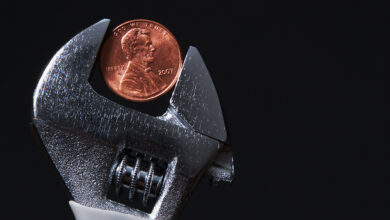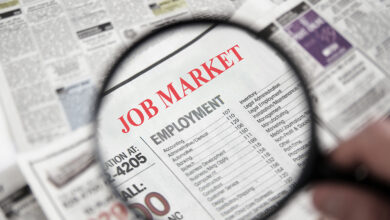
KPI – September 2024: State of Business
KPI – September 2024: Recent Vehicle Recalls
KPI – September 2024: The Brief
KPI – September 2024: State of Manufacturing
KPI – September 2024: State of the Economy
Consumer Trends
Below is a synopsis of consumer confidence, sentiment, demand and income/spending trends.
The Conference Board Consumer Confidence Index® fell to 98.7 (1985=100) in September, following an upwardly revised 105.6 in August. The Present Situation Index – based on consumers’ assessment of current business and labor market conditions – dropped by 10.3 points to 124.3. The Expectations Index – based on consumers’ short-term outlook for income, business and labor market conditions – declined by 4.6 points to 81.7 – hovering at a rate which historically signals a recession ahead.
“Consumer confidence dropped in September to near the bottom of the narrow range that has prevailed over the past two years,” says Dana M. Peterson, chief economist at The Conference Board.
She says its decline was deemed the largest since August 2021, as all five components of the Index deteriorated. Consumers’ assessments of current business conditions turned negative, while views of the current labor market situation softened further.
“The deterioration across the Index’s main components likely reflected consumers concerns about the labor market and reactions to fewer hours, slower payroll increases and fewer job openings – even if the labor market remains quite healthy, with low unemployment, few layoffs and elevated wages,” Peterson says.
According to a supplemental survey question, consumers pointed to interest rates, inflation and elevated price levels, especially in food and groceries, as having the greatest impact on their view of the U.S. economy. The labor market and U.S. political division also were top of mind.
Peterson says the proportion of consumers anticipating a recession over the next 12 months remained low, but data shows a slight uptick in the percentage of consumers believing the economy already is in recession.
High-Level Takeaways, Courtesy of The Conference Board:
- The drop in confidence was greatest among consumers aged 35 to 54. In September, confidence declined across most income groups. Those earning less than $50K experienced the largest decrease, while consumers earning over $100K remained the most confident on a six-month moving average basis.
- Average 12-month inflation expectations increased to 5.2% in September, despite a slow in inflation and decline in certain goods prices.
- Consumers’ expectations for the stock market stabilized after the financial market tumult in early August: 25% of consumers expected stock prices to fall over the year ahead (down from 26.5% in August), while 47.6% expected stock prices to rise (down slightly from 47.9% in August).
- Data shows consumers remain pessimistic about future labor market conditions, business conditions and income.
The University of Michigan Survey of Consumers is a survey consisting of approximately 50 core questions covering consumers’ assessments of their personal financial situation, buying attitudes and overall economic conditions. Currently, the Survey of Consumers reading is 69, a 2% increase compared to August.
“Sentiment is now about 40% above its June 2022 low, though consumers remain guarded as the looming election continues to generate substantial uncertainty,” says Joanne Hsu, director of Survey of Consumers.
Important Takeaways, Courtesy of Survey of Consumers:
- The monthly gain was led by an improvement in buying conditions for durables, driven by more favorable prices as perceived by consumers.
- Year-ahead expectations for personal finances and the economy both improved as well, despite a modest weakening in views of labor markets.
- Year-ahead inflation expectations fell for the fourth straight month, resting at 2.7%. The current reading is the lowest since December 2020 but within the 2.3-3.0% range.
- Long-run inflation expectations were little changed, edging up from 3.0% to 3.1% this month.
Consumer Income & Spending
According to the U.S. Bureau of Economic Analysis (BEA), in July 2024 personal income increased $75.1 billion (0.3% at a monthly rate), while disposable personal income (DPI) – personal income less personal current taxes – increased $54.8 billion (0.3%) and personal consumption expenditures (PCE) increased $103.8 billion (0.5%).
In addition, personal outlays – the sum of PCE, personal interest payments and personal current transfer payments – increased $103.3 billion in July. Personal saving hit $598.8 billion, while the personal saving rate – personal saving as a percentage of disposable personal income – registered 2.9%.
Important Takeaways, Courtesy of BEA:
- The $103.8 billion increase in current-dollar PCE reflected an increase of $59.3 billion in spending for services and $44.5 billion in spending for goods. Within services, the largest contributor to the increase was housing and utilities (led by housing). Motor and parts, as well as food and beverages, led the increase in goods.
- Overall, the PCE price index increased 2.5% year-over-year. Prices for goods decreased by less than 0.1%, while prices for services increased 3.7%. Food and energy prices increased 1.4% and 1.9%, respectively. Excluding food and energy, the PCE price index increased 2.6% from one year ago.



